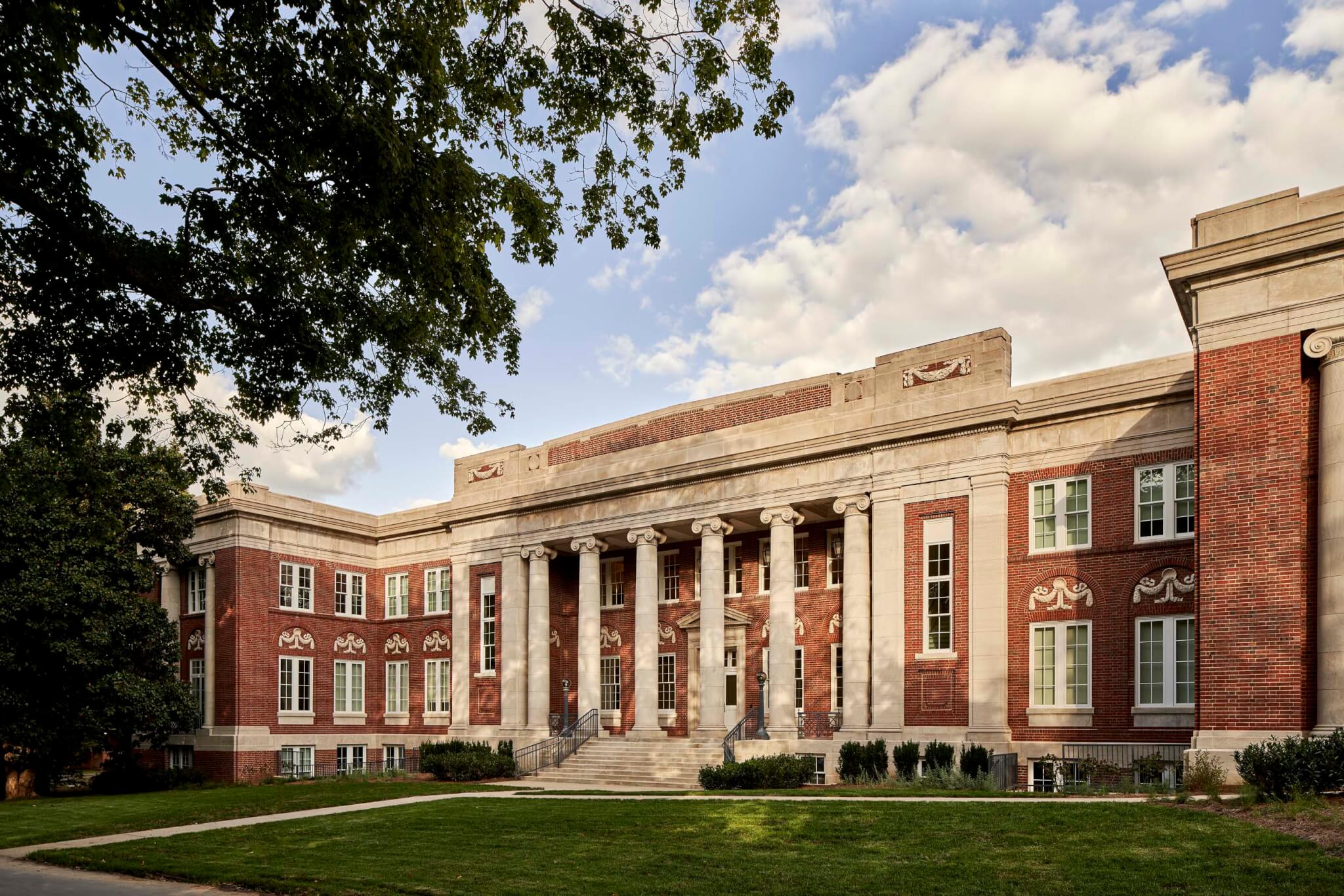- Architect
SGA Architecture - Location
Nashville, Tennessee - Completion Date
August, 2020 - Architect of Record
Centric Architecture
- Client
Vanderbilt University - Construction Manager
Messer - Structural Engineer
Structural Design Group - Civil Engineer
Barge Cauthen & Associates - Glass
AGC Glass North America
A renovation of a pair of brick buildings at Peabody College at Vanderbilt University led by SGA Architects connects the historic structures via a contrasting glass volume. 6 Magnolia Circle, built in 1912, and Mayborn, built in 1914, were built for the University’s George Peabody College for Teachers. SGA, which has offices in Boston and New York, was tasked with renovating 55,000-square-feet of the existing two buildings and designing a 16,000-square-foot structure —referred to as the Connector—that unites the two Beaux Arts buildings. The new glazed insertion houses classrooms, open areas, a cafe, a wellness room, and improves ADA accessibility—a recurring issue on many historic university campuses.
Renovation work addressed necessary upgrades to mechanical, electrical, and plumbing systems, audio and visual needs in classrooms, and added a new elevator in the Connector, to enhance accessibility. Given that floor elevations in the historic buildings were offset, the design team faced challenges making the connection accessible. Ultimately, entries on both exterior sides of the Connector “mitigate” the gap in floor elevations, and all levels contain accessible work spaces.

SGA and the contractor, Messer, used virtual design and construction tools to renovate 6 Magnolia Circle and Mayborn. Workers restored interior plaster and wood detailing, extended iron railings to meet current handrail height requirements, repaired damaged limestone along cornice lines, and repointed the brick facades. The original windows on the front of the two buildings were restored, while workers installed high performing replica windows on the other faces of the building. While the design and construction team were able to use some original drawings of the buildings, many details were only “confirmed once the buildings were decanted,” the architects explained.

